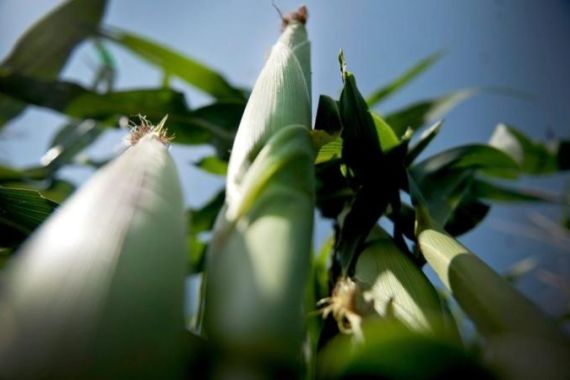Industrial agriculture has failed to eliminate food insecurity in Africa. It is time for a radically different approach.
![Sasini employees unload bags of fertilizer from a truck at Kipkebe Tea Estate at Kipkebe Tea Estate in Musereita on October 21, 2022. - The agricultural drone market is expected to grow in the coming years, with some reports suggesting it could reach 10.5 billion USD by 2028. Kenya, a country vulnerable to drought and food insecurity in some areas, is investing in agricultural technology in the hope to reduce costs and increasing crop yields. (Photo by Patrick Meinhardt / AFP) / The erroneous mention[s] appearing in the metadata of this photo by Patrick Meinhardt has been modified in AFP systems in the following manner: [fertilizer] instead of [pesticide]. Please immediately remove the erroneous mention[s] from all your online services and delete it (them) from your servers. If you have been authorized by AFP to distribute it (them) to third parties, please ensure that the same actions are carried out by them. Failure to promptly comply with these instructions will entail liability on your part for any continued or post notification usage. Therefore we thank you very much for all your attention and prompt action. We are sorry for the inconvenience this notification may cause and remain at your disposal for any further information you may require.](https://www.aljazeera.com/wp-content/uploads/2023/09/32LW7N8-highres-1693837140.jpg?resize=770%2C513&quality=80)

Timothy A Wise is a Senior Advisor at the Institute for Agriculture and Trade Policy.
Industrial agriculture has failed to eliminate food insecurity in Africa. It is time for a radically different approach.
![Sasini employees unload bags of fertilizer from a truck at Kipkebe Tea Estate at Kipkebe Tea Estate in Musereita on October 21, 2022. - The agricultural drone market is expected to grow in the coming years, with some reports suggesting it could reach 10.5 billion USD by 2028. Kenya, a country vulnerable to drought and food insecurity in some areas, is investing in agricultural technology in the hope to reduce costs and increasing crop yields. (Photo by Patrick Meinhardt / AFP) / The erroneous mention[s] appearing in the metadata of this photo by Patrick Meinhardt has been modified in AFP systems in the following manner: [fertilizer] instead of [pesticide]. Please immediately remove the erroneous mention[s] from all your online services and delete it (them) from your servers. If you have been authorized by AFP to distribute it (them) to third parties, please ensure that the same actions are carried out by them. Failure to promptly comply with these instructions will entail liability on your part for any continued or post notification usage. Therefore we thank you very much for all your attention and prompt action. We are sorry for the inconvenience this notification may cause and remain at your disposal for any further information you may require.](https://www.aljazeera.com/wp-content/uploads/2023/09/32LW7N8-highres-1693837140.jpg?resize=770%2C513&quality=80)
India and other G-33 countries are rightfully demanding that food security is addressed at the ongoing WTO meeting.

Why is Monsanto interested in Mexico’s maize market?

The rising cost of food is directly related to the diversion of vital foodstocks to manufacture biofuels.

Global leaders squandered 2012, but prospects for resolving the food crisis in 2013 seem better.

The US ethanol programme pushed up corn prices by up to 21 per cent as it expanded to consume 40 per cent of the harvest
